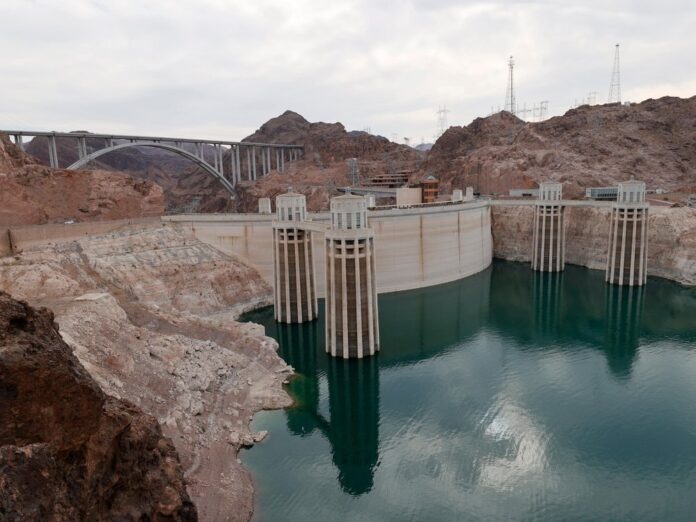
This month Lake Tahoe’s water levels dropped to their lowest point since January 2017. This puts Tahoe in similar company with Lake Mead, whose water levels hit a record low in June 2021, despite the very different systems of the two bodies of water.
“So if we backtrack to 2019, not that long ago, Lake Tahoe was full,” said Dan McEvoy, assistant research professor of climatology at the Desert Research Institute, “And then we had a couple of dry years in a row and the lake got really low really quick.”
These levels for Lake Tahoe are even more unique because the last time they were this low, it was at the tail end of a four year drought, lasting from 2012 to 2016. This time it only took two years.
The recent drought saw a pattern in northwest Nevada of a delay of seasonal soaking rains in the fall. Usually the rains would come around in October, however in 2019 and 2020 they came in mid to late November, according to McEvoy.
These delayed seasonal rains combined with rising temperatures due to climate change led to critically dry soil in northern Nevada. This meant that when rain did come, more of it was soaked up in the landscape and less went to Lake Tahoe and the surrounding rivers.
“The water supply forecasts that were issued, on Apr. 1, overestimated for the region how much water supply would come into the reservoirs,” said McEvoy, “So even the groups making the predictions for the water supply were caught off guard by just how quickly the snow melted and just how much of it went back into the landscape as opposed to going into the streams and filling Tahoe.”
Lake Tahoe’s water levels are already recovering from these extreme lows. Over the past week, the water levels of the lake have risen by over six inches, restoring the lake back above its natural rim.
However such a quick rise in water levels is not possible for Lake Mead, which has been in steady decline since the turn of the century, and just hit a historic new low.
“Looking at Lake Mead right now,” said Kristen Averyt, a research professor at UNLV, “as somebody who grew up going to the lake as a kid, it’s just startling.”
Lake Mead has been steadily losing water since at least the turn of the century, and that has resulted in the reservoir now standing at only 35% of its capacity, according to a report by NASA. The only other time the water was ever this low was when the lake was still being filled for the first time.
This all time low prompted the U.S. Bureau of Reclamation to declare an official water shortage. This resulted in significant cuts to the allotment of water from the entire Colorado River system. The cuts will see Nevada receiving 21,000 acre-feet less, Mexico will receive 80,000 less acre-feet and Arizona will have the biggest cut to its supply at 512,000 less acre-feet of water in 2022, according to a news release from the U.S. Department of Reclamation.
Lake Mead is in this dire situation because the Colorado River, which feeds the reservoir, has been receiving less and less water over the years from runoff from melted snow in the Rocky Mountains. For the last 22 years, the North American Southwest has been in what has been described as a “megadrought” by both a report from NASA and a study published in science.org. This megadrought feeding the lake less over time and increasing demand from the populations that depend on it has steadily driven Lake Mead to this crisis.
Going forward, the Nevada state government has been working to develop a climate strategy to deal with situations like this that have been caused by climate change. Agencies like the Southern Nevada Water Authority have been working for years to alleviate the demand for water from Lake Mead.
“I think it’s really just incumbent on all of us to remember that we actually live in a desert, and we really need to start acting like it now,” said Averyt.
